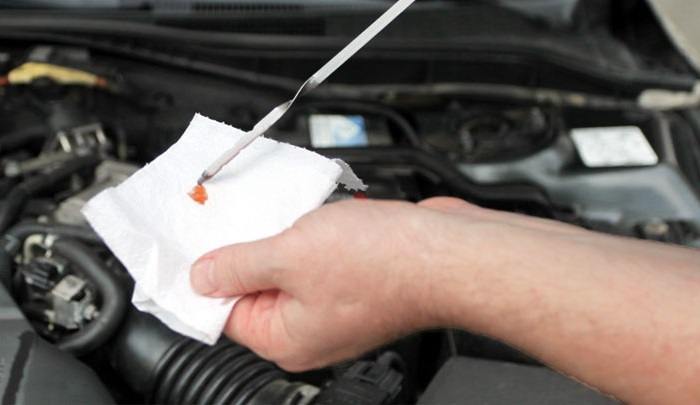by Joshua Thomas
A vehicle failing to go in reverse but driving fine is a super annoying issue. In such instances, you will typically be unable to engage the reverse gear. But, for some cases, the vehicle does not move in reverse even with the gear engaged.
What makes this problem even more bothersome is that you need the reverse gear almost every time you drive the car. There are different reasons this can happen, and here we look at a few and provide possible solutions.
Contents

Low transmission fluid levels will come with numerous transmission system issues such as overheating, erratic shifting, engine stalling, and the vehicle not moving in reverse.
The low fluid levels mean that the gears will not be getting adequate lubrication. This, in turn, leads to overheating that then causes a malfunction of the reverse gear.
Dirty transmission fluid or filter can also cause the same issue as it affects the fluid's effectiveness at lubricating the gears.
If your vehicle has a low transmission fluid level or the fluid is dirty, the reverse gear problems are just the start. You are also likely to start experience issues shifting to other gears, erratic shifts, and other things like spikes in RPMs when shifting.
Read More: Low Transmission Fluid Symptoms
Solution: Replace both Transmission Fluid and Filter
Low transmission fluid is an easy issue to fix that will not require any professional help. However, to be sure it is the source of the problem, you must first check the transmission fluid level using the dipstick. Make sure you do it when your engine is hot and the vehicle is in the neutral gear.
Although it is easier and cheaper to top up the transmission fluid instead of replacing it, you should not. Instead, you need to do a complete replacement.
A replacement ensures you not only have enough transmission fluid but also get rid of any contamination. While at it, also replace the filter. The old filter might also be clogged, which affects the fluid flow to the gears.

The transmission system wear is a gradual process that you should notice long before it causes some gears, such as the reverse, to stop functioning correctly. Still, many motorists tend to overlook or ignore the signs of this problem, such as erratic shifts.
As the different components in your transmission system wear out, the pressure required to operate the transmission system cannot build up. One of the first gears to be affected by this natural wear is the reverse gear.
Solution: Inspect the Entire Transmission System
A thorough inspection of the transmission system allows you to identify issues leading to the problematic reverse gear.
In some cases, you will need to replace the entire transmission system upon inspection. But, in many instances, you only need to change a few components like worn out or broken reverse gear teeth.
The transmission selector switch sends a signal to the vehicle's powertrain control module when you need to shift gear. Nevertheless, it will not send the signal to initiate a gear switch to reverse if it is not working correctly.
For many vehicles, a malfunctioning transmission selector switch will force the car to go into limp mode. When on the limp mode, you are also unable to shift the gears beyond the 3rd gear.
Solution: Check Transmission Selector Switch
The transmission selector switch problem often results from natural wear and corrosion. Hence, if the issue is not very severe, you can try putting the vehicle into reverse several times. This action will help dislodge some of the rust in the components to allow the gear to engage.
If this does not work, you need to check the transmission selector switch and have it fixed or replaced. If the check engine light is on, you need to use a car diagnostic tool to verify that the corresponding codes indicate an issue with the transmission selector switch.
Once you ascertain the switch is faulty, your mechanic should advise whether to replace or repair it.
Broken gear teeth are quite a common problem, especially with manual transmission system vehicles. As many motorists learn how to drive a stick shift, they tend to abuse the gears by not shifting correctly, resulting in broken reverse gear teeth.
When you have broken reverse gear teeth, you will often hear a loud clunk or clicking noises when engaging the reverse gear.
Solution: Replace the Gear
Unfortunately, you cannot repair broken reverse gear teeth. Hence, the only solution here will be to pull out the transmission system and replace the damaged gear.

The clutch allows you to switch gears in a manual transmission, so if it is not working correctly, you cannot change the gears to reverse.
Solution: Pump the Clutch
A simple clutch fix will be to try and pump it several times to build up pressure to allow you to shift the stick to reverse.
If this trick still does not solve the issue, you should switch off your engine and try shifting through the gears to reverse. If you can engage the reverse gear, this is proof that your clutch is faulty and needs repair.
If there is a worn gasket on the seal and link under your engine, it will come with many problems, and the vehicle failing to drive in reverse gear is just one of them. The worn gaskets will prevent the gears from shifting smoothly.
Solution: Check and Replace Worn Gasket
There are different ways to check for worn-out gaskets, such as using a kit. Also, worn gaskets will often lead to other issues like overheating under the hood and smoke with whitish tint blowing from the exhaust.
When you find any worn gaskets, you need to replace them with new ones, but keep in mind that you may need some special skills and tools for this job, and sometimes it is better to leave the job for a professional mechanic.
Regardless of the size and type of vehicle that you drive, the reverse gear is crucial. When it is not working, simple things like parking or moving out of the garage will almost be impossible.
While several things can cause this problem, most of these issues should be relatively straightforward to fix for an experienced mechanic. That said, proper vehicle maintenance and good driving habits are the best ways to prevent the problem.
Sources
 |
 |
 |
 |

About Joshua Thomas
Joshua Thomas just simply loves cars and willing to work on them whenever there's chance... sometimes for free.
He started CarCareTotal back in 2017 from the advices of total strangers who witnessed his amazing skills in car repairs here and there.
His goal with this creation is to help car owners better learn how to maintain and repair their cars; as such, the site would cover alot of areas: troubleshooting, product recommendations, tips & tricks.
Joshua received Bachelor of Science in Mechanical Engineering at San Diego State University.
Just Car Care